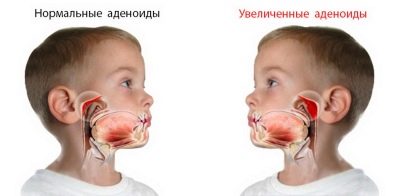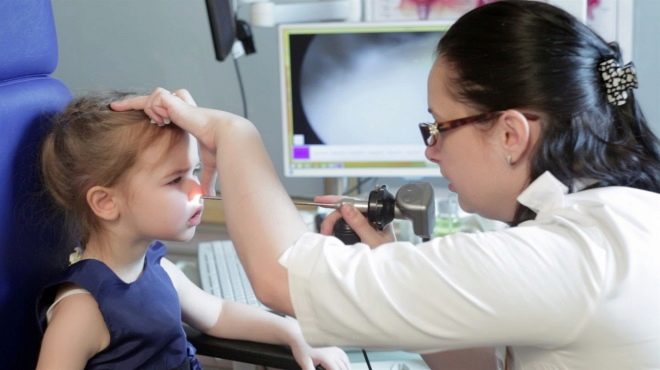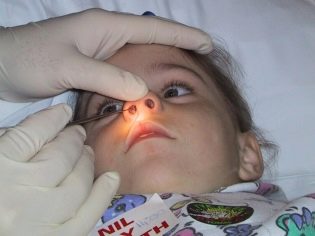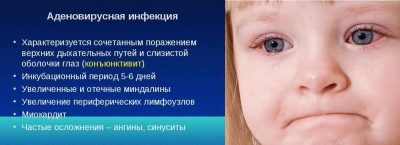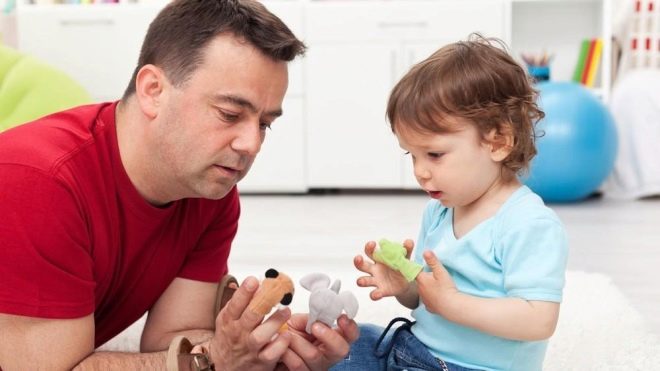Why is the baby sleeping with his mouth open?
The children's body is not at all like an adult. Quite often parents notice that their baby does not breathe through the nose, but through the mouth. This norm or pathology, this article will help to understand.
Causes of respiration in babies through the mouth
Normally, a person breathes his nose. The oropharynx may also be involved in breathing, but this is not a very physiological process. That's the way the adult organism works. A child can have something different, especially for very young children.
Nasal breathing is necessary. The air in the environment is somewhat lower in temperature than the body requires. Passing through the whole system of nasal passages, it is well warmed and also additionally moistened.
The mucous membranes of the nose are lined with epithelial cells, on the outer surface of which there are quite a few small cilia. These formations retain the smallest particles of dust, preventing the body from falling into the internal environment.
If the baby breathes through the mouth, then the air does not have time to fully warm up and immediately enters the lower respiratory tract. This situation contributes to the development in the child of various diseases of the upper respiratory tract. Toddlers, often breathing with their mouths, often develop pharyngitis and laryngitis, and also have a rather high risk of developing bronchitis.
The appearance of such a symptom in a child older than two years should be a signal to the parents that the baby may have some pathology leading to the development of this symptom.
Observant fathers and mothers decide to show the kid's doctor. In this case, they are right. Many diseases occur in children without the manifestation of multiple clinical signs. Breath by mouth can be the first "bell" that the child's body needs help.
If the baby begins to breathe through the mouth on the street, then the risk of infection with various infections, as well as colds, increases many times over. According to statistics, children living in large industrial cities are more likely to become ill with various pathologies of the respiratory tract. Chilling air into the lungs may contribute to the onset of the inflammatory process with the development of pneumonia.
It is necessary to take into account the age of the child, in which the parents noticed that the baby was used to constantly breathing through the mouth.
If a baby older than 3 years is constantly breathing through his mouth, then this may indicate that he has signs of any diseases of the paranasal sinuses. This symptom may manifest in children suffering from a prolonged course of chronic sinusitis or sinusitis. These diseases are also accompanied by the development of severe nasal congestion.
If a baby has this symptom when he is sleeping, then parents should definitely watch him during sleep. Toddlers who strongly throw their heads back off the pillow often breathe through the open mouth. To eliminate this unfavorable symptom in this situation is quite simple. Just need just pick up another pillow, sleep on which will be for your baby as comfortable as possible.
Schoolchildren may have nasal breathing and breathing through the mouth. manifestation of adenoids. This pathological condition is accompanied by the active growth of adenoid tissue, which grows excessively in the nasopharynx. It takes time to develop adenoids. Usually this process develops in a child over several years. Respiratory disorders in this case are progressive.
To identify the manifestation of this symptom in children at the earliest stages is almost impossible. Only a few years later, the child begins to actively breathe through his mouth. This symptom manifests itself in a baby both during the daytime and at night.
Unfortunately, it is very difficult to cure the pronounced adenoids in the nasopharynx with the help of medication alone. In some cases, surgical methods of therapy are used.
Enlarged Palatine Tonsils - It is also a fairly frequent pathology that develops in children. The development of this pathological condition in children can lead a variety of reasons. Quite often, an enlarged tonsil is recorded in children who have had severe bacterial sore throat.
Chronic tonsillitis also contributes to hypertrophy (increase) of the tonsils. The proliferation of these formations leads to a mechanical narrowing of the lumen of the respiratory tract. This situation is dangerous not only because the baby begins to breathe with his mouth, but also because he can develop very dangerous complications.
The protracted course of this pathological condition can also contribute to the development of symptoms of respiratory failure in a child, due to the fact that the baby has developed signs of oxygen starvation (hypoxia) of tissues.
The development of impaired respiration can lead not only to the active growth of adenoids, but also polyps. These formations can also significantly disturb nasal breathing. The number of polyps in babies can be very different. Their active growth is observed in children with reduced immunity or concomitant diseases of the upper respiratory tract.
According to statistics, polyps growing in the nasopharynx are more common in children aged 7-12 years. Doctors note that a hereditary factor plays an important role in the development of this pathological condition.
If one of the parents had nasopharyngeal polyposis, the risk of developing this pathology in a child increases several times. The treatment of this pathological condition, as a rule, is long-term and is chosen strictly individually by a children's otolaryngologist for each sick child.
Respiratory diseasescaused by various viruses are also very common pathologies leading to a violation of nasal breathing.
Adenovirus infection, accompanied by the appearance of a strong cold in a sick baby, often results in the baby beginning to breathe through the mouth. Also, this unfavorable symptom may also occur in children who become ill with influenza or ARVI.
Allergic diseasesWith the development of rhinitis (runny nose), can also cause breathing problems through the nose. The manifestation of such manifestations has a rather distinct seasonal nature.
In spring and early summer, the number of cases of respiratory allergy increases significantly. This results in the ingestion of pollen of plants or shrubs in the nasopharynx. Such manifestations are mainly observed in babies who have an individual sensitivity to them.
Nose injuries also contribute to the fact that the child can not fully breathe through his nose. In this case, you can see that the baby breathes through the mouth. Most often such situations occur during adolescence in boys. During the application of a traumatic injury, a condition that is very dangerous for breathing can occur - a fracture of the nasal septum. In this case, the baby begins to actively breathe through the mouth.
To eliminate this adverse manifestation in a child, surgical otolaryngological treatment is required. For babies with a damaged nasal septum, it is fully restored. Without performing such treatment, unfortunately, it is impossible to restore proper nasal breathing.
It should be noted that students can be observed physiological options of respiration through the mouth. This situation is possible after or during intensive physical training.
The increased load contributes to the fact that the child's body requires more oxygen. In order to quickly eliminate such an arisen condition, the child begins to often and intensively breathe through his mouth.
Why does the baby breathe with his mouth open?
Quite often, mothers note that their newborn babies breathe with their mouths. Usually this condition is most often manifested in a dream. Kids of the first months of life almost all the time sleep. It is necessary for newborn children for active growth and development. A newborn baby sleeps a lot, not only at night, but during the day.
Small dust particles can damage the delicate mucous membranes of the nose and mouth. They are so gentle that they are easily damaged when exposed to any mechanical effects. Immaturity of the immune system also contributes to the fact that the baby is quite easily infected with infections.
In newborn babies, the causes of mouth breathing can be very diverse.
If the child is sleeping in an uncomfortable position, then he has to breathe through his mouth. Parents in this case should pay attention to the crib, in which the newborn baby spends most of the time. It should be comfortable and comfortable for baby sleep.
A runny nose, which is called physiological in babies, also leads to a violation of nasal breathing. It occurs in almost every newborn child.
If the baby was born somewhat earlier than expected or he has any congenital anomalies of the structure of ENT organs, then the risk of developing a prolonged runny nose in a child increases significantly.
To maintain good nasal breathing, microclimate indicators are very important. Too dry air contributes to the desiccation of the mucous membranes of the nasopharynx. Optimum humidity in the children's room should not fall below 50%.
If this indicator is constantly decreasing, then in this case the use of special devices - humidifiers is required. They help to normalize humidity to optimal values.
Newborn babies can also get various colds and infections. They can also get infected from their parents. Moms and dads should always remember that during an acute period of SARS or influenza they should limit any contact with the child.
To prevent infection, it is also important to avoid any interactions with temperate people. Quite often infants are infected from relatives who come to visit in order to see the newborn baby.
In the first days of life in a child, the muscles of the back of the neck are not yet fully developed. Some babies may even have hypotonia of these muscle groups. This is manifested in the fact that the child throws his head back a little. People say that the child "still does not hold the head." Certain time is required to stabilize the cervical spine.
Hypotonus of the muscles of the back of the neck and upper shoulder girdle contributes to the fact that the baby begins to actively breathe through the mouth. Usually, this state goes away after a few months of life. At this time, you should definitely watch how the baby breathes.
If by year the child has this unfavorable symptom, then a mandatory consultation with a pediatrician is required.
What can be done?
To normalize nasal breathing in babies, it is very important to watch how a child falls asleep. His posture should be comfortable and not bring discomfort to the kid.
Of great importance is the bed and pillow, in which the child sleeps. Currently on the market there are a huge number of different products that have an orthopedic effect. Sleeping in such beds not only normalizes the baby’s breathing, but also helps stabilize the spine.
To normalize nasal breathing necessarily necessary clear the nasal passages from the secret. Also for this purpose, you can use special aspirators.You can wash the spout using saline or pharmaceutical preparations. These funds are completely harmless cleans the nasal passages of mucus.
If respiratory impairment has arisen in a baby due to various diseases of ENT organs, then a mandatory visit to the doctor is required. The doctor will make the necessary treatment regimen. It usually includes vasoconstrictor nasal drops or sprays. These remedies help relieve severe swelling, which leads to an improvement in nasal breathing.
Eliminating symptoms caused by bacterial infections is possible only with the use of antibacterial agents. Local therapy is usually used for this.
Nasal drops are usually prescribed for 7-10 days. If during the prescribed treatment the baby doesn’t feel better, then in this case correction of the prescribed therapy regimen is necessarily carried out.
Allergic diseases, leading to the fact that the baby breathes with the mouth, in the treatment require a mandatory appointment antihistamine drugs. These funds help to normalize nasal breathing, as well as relieve nasal congestion and swelling that occurred in the nasopharynx as a result of allergic inflammation.
To eliminate the adverse symptoms, both local remedies and tablets are used. These drugs are usually prescribed for 1-2 weeks.
Weaning your baby to breathe with your mouth is quite a laborious task. To do this, be sure to follow his behavior. For little children who still have difficulty explaining what this breath can lead to, it should be turned into an entertaining game.
Many kids in childhood like some specific types of animals. If the child is delighted and collects cats, then you can tell him that all kittens breathe nose, not mouth. Typically, this psychological technique works well for kids under the age of 3-4 years.
With older children, you can already try to build a constructive dialogue. You should tell the child to breathe the nose, not the mouth. In a conversation, emphasize that this is exactly how dad and mom breathe.
Teenagers and schoolchildren can already tell what can lead to rapid breathing through the mouth. This psychological method can only be used if the baby’s respiratory nasal function is preserved.
About why it is dangerous for a child to sleep with his mouth open, see the following video.







